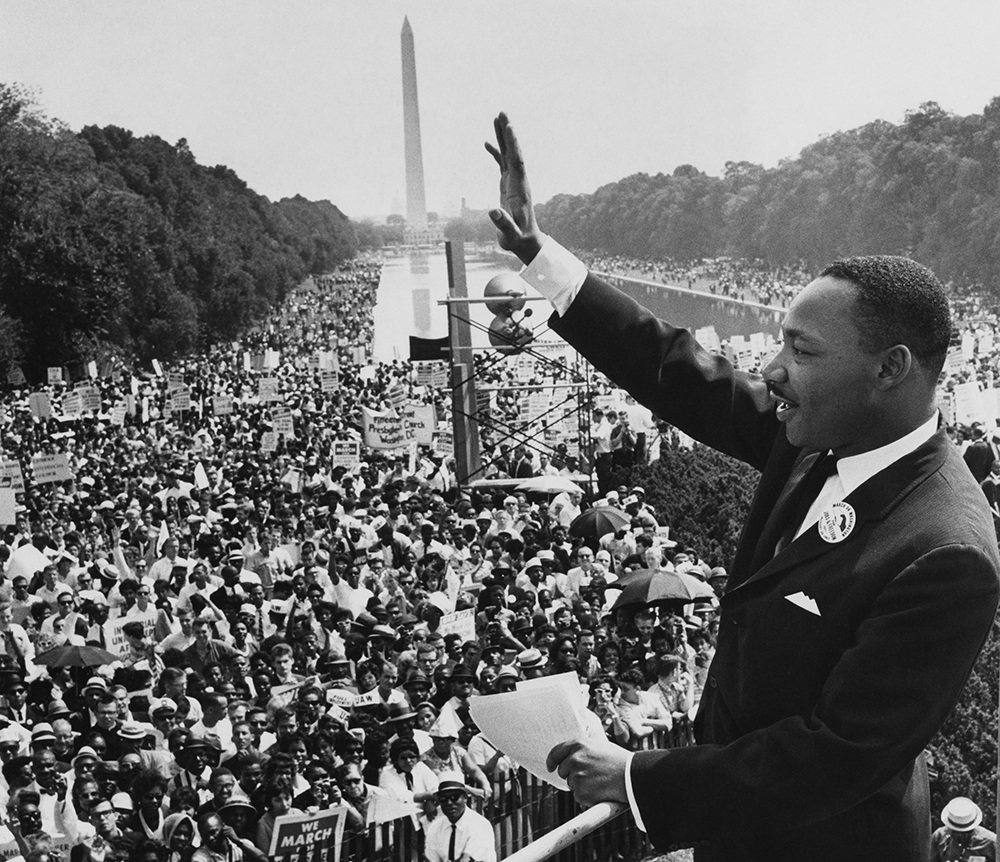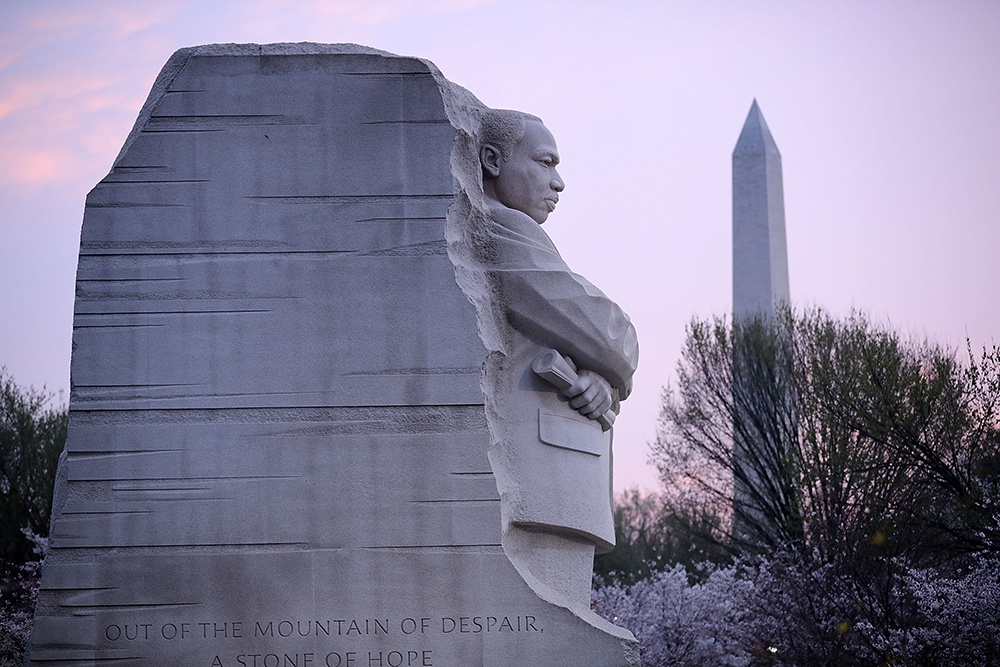Why “I Have A Dream” remains one of history’s greatest speeches
Professor of Communication Leroy Dorsey explains the rhetorical devices used by Rev. Martin Luther King, Jr. in his 1963 speech and reflects on why the address remains relevant.

By Lesley Henton, Texas A&M University Division of Marketing & Communications
Monday will mark the 34th annual holiday in honor of Rev. Martin Luther King, Jr. and Texas A&M University Professor of Communication Leroy Dorsey is reflecting on King’s celebrated “I Have a Dream” speech, one which he said is a masterful use of rhetorical traditions.
King delivered the famous speech as he stood before a crowd of 250,000 people in front of the Lincoln Memorial on Aug. 28, 1963 during the “March on Washington.” The speech was televised live to an audience of millions.
Dorsey, associate dean for inclusive excellence and strategic initiatives in the College of Liberal Arts, said one of the reasons the speech stands above all of King’s other speeches – and nearly every other speech ever written – is because its themes are timeless. “It addresses issues that American culture has faced from the beginning of its existence and still faces today: discrimination, broken promises, and the need to believe that things will be better,” he said.
“He was not just speaking to African Americans in that speech, but to all Americans”
Powerful use of rhetorical devices
Dorsey said the speech is also notable for its use of several rhetorical traditions, namely the Jeremiad, metaphor-use and repetition.
The Jeremiad is a form of early American sermon that narratively moved audiences from recognizing the moral standard set in its past to a damning critique of current events to the need to embrace higher virtues.
“King does that with his invocation of several ‘holy’ American documents such as the Emancipation Proclamation and Declaration of Independence as the markers of what America is supposed to be,” Dorsey said. “Then he moves to the broken promises in the form of injustice and violence. And he then moves to a realization that people need to look to one another’s character and not their skin color for true progress to be made.”
Second, King’s use of metaphors explains U.S. history in a way that is easy to understand, Dorsey said.
“Metaphors can be used to connect an unknown or confusing idea to a known idea for the audience to better understand,” he said. For example, referring to founding U.S. documents as “bad checks” transformed what could have been a complex political treatise into the simpler ideas that the government had broken promises to the American people and that this was not consistent with the promise of equal rights.
The third rhetorical device found in the speech, repetition, is used while juxtaposing contrasting ideas, setting up a rhythm and cadence that keeps the audience engaged and thoughtful, Dorsey said.
“I have a dream” is repeated while contrasting “sons of former slaves and the sons of former slave owners” and “judged by the content of their character” instead of “judged by the color of their skin.” The device was used also with “let freedom ring” which juxtaposes states that were culturally polar opposites – Colorado, California and New York vs. Georgia, Tennessee and Mississippi.
Words that moved a movement
The March on Washington and King’s speech are widely considered turning points in the Civil Rights Movement, shifting the demand and demonstrations for racial equality that had mostly occurred in the South to a national stage.
Dorsey said the speech advanced and solidified the movement because “it became the perfect response to a turbulent moment as it tried to address past hurts, current indifference and potential violence, acting as a pivot point between the Kennedy administration’s slow response and the urgent response of the ‘marvelous new militancy’ [those fighting against racism].”
What made King such an outstanding orator were the communication skills he used to stir audience passion, Dorsey said. “When you watch the speech, halfway through he stops reading and becomes a pastor, urging his flock to do the right thing,” he said. “The cadence, power and call to the better nature of his audience reminds you of a religious service.”
Lessons for today
Dorsey said the best leaders are those who can inspire all without dismissing some, and that King in his famous address did just that.
“He was not just speaking to African Americans in that speech, but to all Americans, because he understood that the country would more easily rise together when it worked together,” he said.
“I Have a Dream” remains relevant today “because for as many strides that have been made, we’re still dealing with the elements of a ‘bad check’ – voter suppression, instances of violence against people of color without real redress, etc.,” Dorsey said. “Remembering what King was trying to do then can provide us insight into what we need to consider now.”
Additionally, King understood that persuasion doesn’t move from A to Z in one fell swoop, but it moves methodically from A to B, B to C, etc., Dorsey said. “In the line is ‘I have a dream that one day,’ he recognized that things are not going to get better overnight, but such sentiment is needed to help people stay committed day-to-day until the country can honestly say, ‘free at last!’”
Originally posted here.

